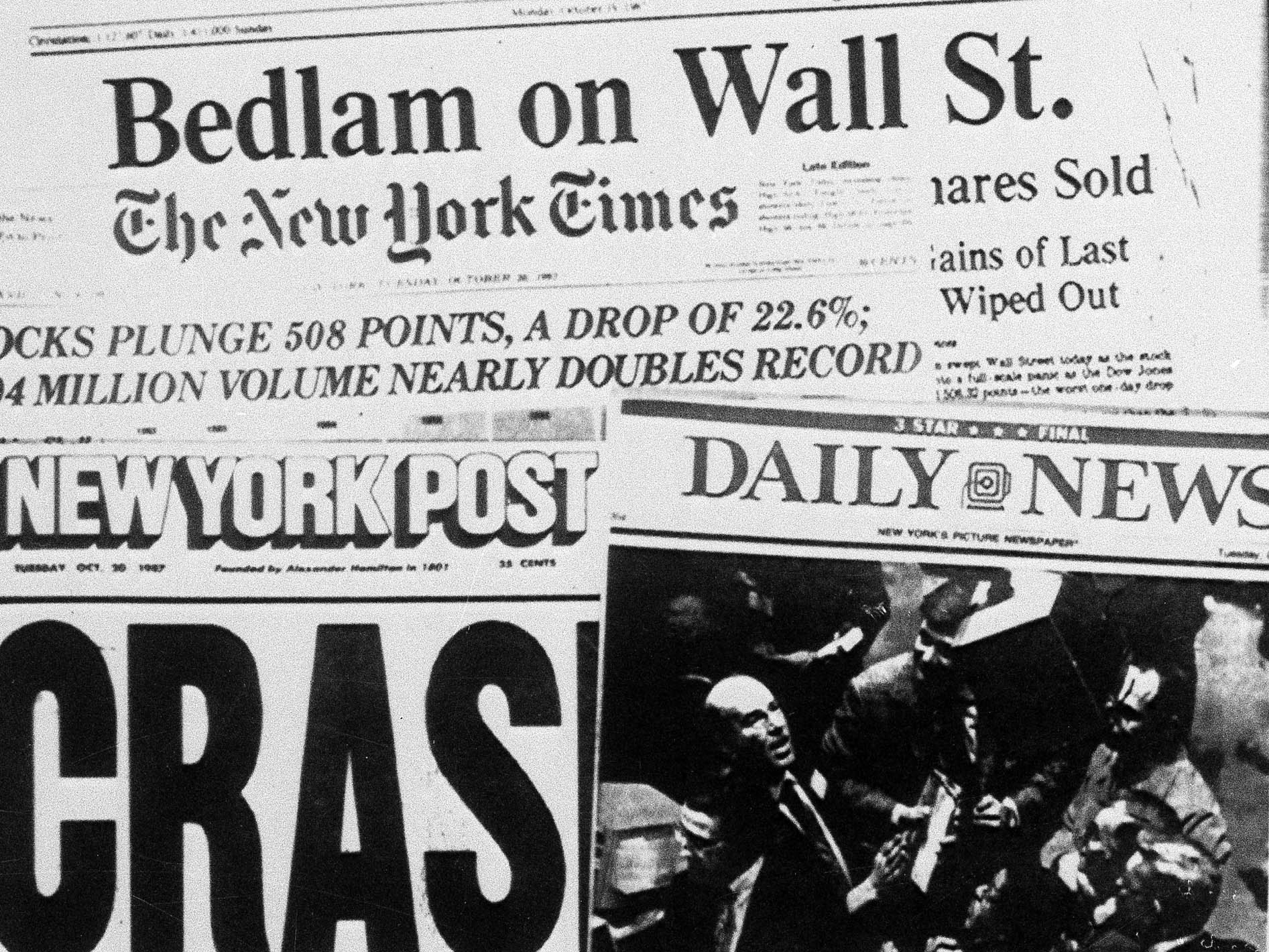Thirty years ago, the Dow Jones industrial average plunged by 22.6% – a gut-wrenching 508 points – to 1,738.74 on what is now referred to as Black Monday.
It was by far the largest one-day percentage drop in US stock-market history. That would be the equivalent of the Dow crashing by about 5,233 points in a single day, down to 17,921.
But as scary as that October day was, US economic growth remained resilient, and gross-domestic-product growth never went negative. This is arguably the most important thing to remember about the whole ordeal.

That's not to say the stock market has zero effect on the economy. After all, a huge sell-off could slow the economy and even lead to a recession.
But analysts have previously suggested that stock-market crashes typically lead to less severe recessions than something like a housing crash or a credit crisis, for example.
Lombard Street Research's Dario Perkins once compared the effect on GDP from both the dot-com stock-market crash of 2000 and the subprime-mortgage crisis of 2007-08. GDP continued to rise during the former, but it got slammed in the wake of the latter.

Going back to stocks, it's encouraging to remember that the stock market didn't die on Black Monday. The Dow is up about 1,231% since that fateful day, to about 23,150.

